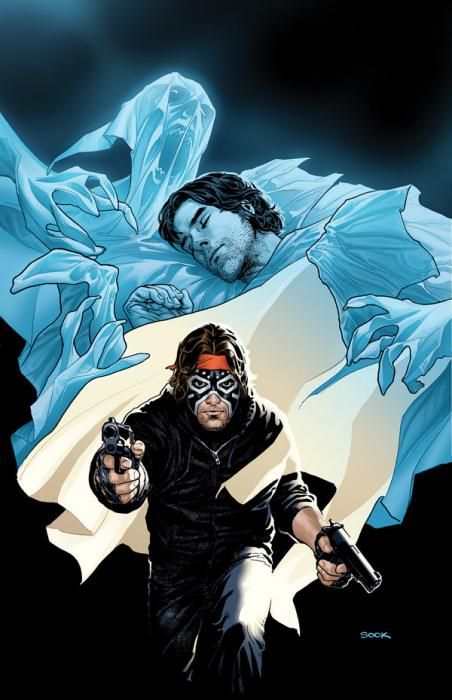"Dream Thief" #2 by Jai Nitz and Greg Smallwood follows the further adventures of John Lincoln as he involuntarily slips into murder victim Jimmy Oliver's memories and alternately plays detective and executioner.
On the opening page, John Lincoln makes an analogy about uncovering memories. It's a great introduction page in how it is a recap for the reader, but also shows off how Nitz's words and Smallwood's images interact closely due to their cohesive style and teamwork. Nitz's diction is precise and elegant. As Lincoln's opening monologue concludes, "little by little, the adhesive gives away," Smallwood arranges the broad white panel gutters to look like tape across the page as Lincoln peels into someone else's old life. It's a bonus for readers when formal details echo the events of the plot, and Smallwood does it in a way that is pleasantly noticeable but not distracting.
As Lincoln moves around, looking for the next person on a hit list shaped by memories, Smallwood takes even more artistic risks with the shape of gutters and overlapping panels, creating his own language for visual storytelling by pointing out links with circles and lines. Besides its intrinsic interest as formal technique, Smallwood's storytelling enhances the dream-like atmosphere of "Dream Thief" #2 with its coded, symbol-like presentation of crime and justice. This out-of-body feeling is also a good foil to Lincoln's matter-of-fact, crime-documentary-like narration. Nitz's script is heavy on text and light on dialogue, and accordingly, Smallwood's confident charcoal-like line carries a lot of the action.
The plot of "Dream Thief" #2 is a mix of formal innovation and well-worn archetypes. The full story arc is an almost self-contained "Kill Bill"-like revenge story, but in different clothes and with more moral ambiguity, since Lincoln is a stand-in for the victim and both his own past and his eye-for-an-eye brand of blood justice don't exactly show him to be squeaky-clean.
The victim, Jimmy Oliver, was a discharged veteran turned gay porn star. It's an unusual character choice by Nitz, who seems to be eschewing any attempt to make any of the characters an Everyman. For each vivid, specific act of revenge, Lincoln unpacks more of Oliver's memories. Smallwood makes the back-and-forth easy between dream and reality, past and present to follow. The panel borders of the past are rough and the images are rendered in black-and-white. In contrast, the present-day has straight panel borders and the world is colored in subdued neutrals, with only blasts of bright red to emphasize violence.
Nitz and Smallwood's storytelling maintains suspense and they fit a huge amount of plot into one issue. The story is super-compressed without feeling rushed, and the cascade of detail and action makes Lincoln's eventual exhaustion feel earned.
However, only two issues in, the plot feels too episodic, slipping into a avenged-victim-of-the-month rhythm instead of exploring the more unusual elements of the world of "Dream Thief," namely, the hows and whys of John Lincoln's powers. Characterization is also on hold in "Dream Thief" #2, since the dense action leaves little room to further shed light on Lincoln's emotional development.
The teaser for "Dream Thief" #3 shows Lincoln heading to Mississippi for a new adventure of vengeance. Given that the mini-series is only five issues, I'm hoping that the action and new setting slows down enough to give the reader more clues about the mythology of the world and Lincoln's internal state. Overall, though, "Dream Thief" is still a strong, distinctive read and Nitz and Smallwood make the second issue welcoming to new readers.

